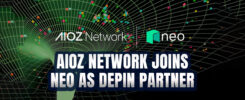Autonomous AI agents have become the hottest topic for cryptocurrencies in 2025, swelling from an experimental novelty to a $13.5 billion market overnight. Truth Terminal, AI Agent, Marc Andreessen convinced To donate $50,000, launching the GOAT token with a market cap of $1.2 billion. More than 11,000 agents now operate on the Virtuals Protocol platform alone, executing trades and managing portfolios with minimal human supervision.
But there is a problem no one wants to talk about. These AI agents are designed to bring efficiency to decentralized finance, although they are often highly centralized. The vast majority of them rely on closed-source models from companies like OpenAI and Anthropic, creating centralized monopolies with privileged access to user data and transaction flow. In an industry built on transparency, AI agents represent the cryptocurrency market’s greatest product fit and greatest philosophical contradiction.
The question is not whether AI agents will reshape cryptocurrencies. They already are.
Black box problem
Security researchers have raised concerns that many AI agents deployed on blockchain networks use unaudited smart contracts, most of which direct decision-making through centralized AI services. When an agent executes a $100,000 DeFi strategy, the logic happens inside OpenAI or Google’s servers, which are black boxes that you can’t inspect or verify.
As agents handle greater volume, companies controlling the underlying AI models gain unprecedented insight into trading patterns, user behavior, and market movements. The concern is clear: even if blockchain technology itself remains decentralized, the intelligence layer becomes a choke point. Big tech companies building proxy marketplaces could extract huge rents through walled gardens, many industry observers have warned.
Decentralized AI as a counter-narrative
A smaller group of projects is trying to build AI agents differently, with transparency, open source models, and cross-chain verification as core design principles.
rewardwhich has launched the world’s largest decentralized AI platform, represents one of the most comprehensive attempts at this approach. Last month, when Kava AI expanded to BNB Chain at Token2049 Singapore, it far surpassed 100,000 users, the highest adoption rate of any blockchain-native AI to date.
Unlike most competitors, Kava runs its own AI inference on decentralized infrastructure in the US using DeepSeek R1, an open-weight model. When a Kava AI agent executes a cross-chain payout strategy, the logic is verifiable on-chain rather than hidden in the company’s servers.
When I had the opportunity to sit down with Scott Stewart, CEO of Kava, at the Web3 HashKey Festival in Hong Kong in April this year, he went straight to the core issue: “You can have the most decentralized blockchain in the world, but if the AI that makes decisions for users is a black box controlled by three companies in San Francisco, then you haven’t You don’t actually decentralize anything. You’ve just moved the choke point. That’s why we built on open-weight models with US-based infrastructure. Transparency is not optional if you are serious about Web3’s core values.”
Regulatory tailwinds favor this approach. With the GENIUS Act signed into law in July 2025 and the CLARITY Act advancing in Congress, US policy is creating frameworks that reward compliant and transparent infrastructure. Hosting AI on US infrastructure with auditable models positions projects favorably as organizations evaluate platforms that meet emerging compliance standards.
Infrastructure arms race
Kava is not alone. Ask, my dear TAO, which has a market capitalization of $4 billion, uses a subnet structure that distributes training for AI models across a decentralized network. Fetch.ai (Fit) and makes (RNDR) provides decentralized computing resources specifically for AI workloads. Launching the ai16z project Eliza OS– An open source framework that now supports over 100,000 tokens across 1,100 partners.
Meanwhile, Virtual protocol It has become the largest platform in terms of volume, showing that the market is currently prioritizing functionality over philosophy. Its agent, Luna AI, has made headlines for employing both human and AI workers, pushing the boundaries of autonomous economic activity.
The tension is clear: centralized AI agents work better today. Decentralized alternatives sacrifice some performance for transparency and censorship resistance. The question is whether “best” should be defined by speed of implementation alone, or whether maintaining Web3’s core values deserves equal weight.
The proxy future, governed by who?
We are working to create the architectural patterns that will govern the autonomous AI agents managing trillions of dollars in the next decade. If these agents direct decision-making through centralized services, the decentralization of cryptocurrencies becomes largely aesthetic. Blockchain technology records transactions, but companies control the intelligence that determines which transactions occur.
The alternative is decentralized AI with verifiable models, distributed computing, and on-chain reasoning, but it is harder to build and is currently less performant. But it is the only architecture that maintains user sovereignty at the intelligence layer, not just at the transaction layer.
As regulatory frameworks take hold and institutions allocate capital, several developments will clarify which approach gains dominance. See if organizations are demanding standards of transparency and preservation beyond performance metrics. Observe how AI agents handle the next market downturn, especially when volatility hits and autonomous agents manage billions. Will centralized AI models prioritize corporate interests or user outcomes?
AI agents represent the most pressing user experience improvement in the cryptocurrency space since browser wallets. But the infrastructure choices made now, transparency versus opacity, decentralization versus centralization, will determine whether these agents work to extend Web3’s values or quietly undermine them. The race is already on, and this time, it won’t be decided by speed alone.





